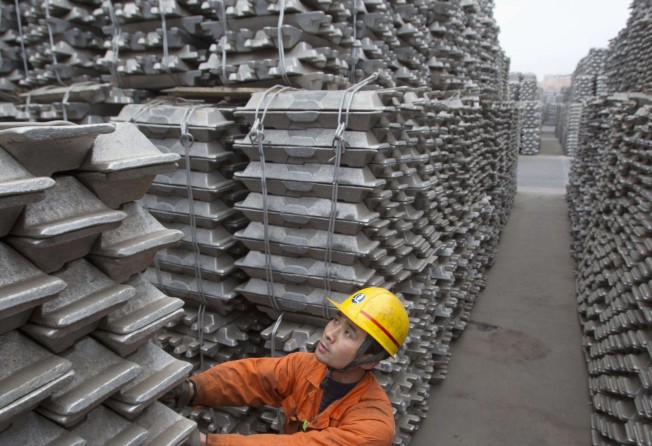China Hongqiao, world’s largest aluminium producer, to expand capacity

China Hongqiao, the world’s largest producer of aluminium, aims to raise the annual capacity of the lightweight industrial metal by around 15 per cent this year if the market recovery continues.
The Shandong-based firm aims to spend up to 15 billion yuan this year on expanding its output capacity of aluminium, alumina, bauxite and electricity, besides retrofitting its coal-fired power plants to meet future carbon emission requirements.
Last year’s spending totalled 14 billion yuan.
Its debt-funded rapid capacity expansion in an industry afflicted with over-capacity has been a concern for investors, but the firm insists its expansion is rational since its production costs are much lower than its rivals because it has its own power plants and in-house upstream materials production facilities.
“This year’s actual capital expenditure will depend on market conditions,” chief executive Zhang Bo said on Monday. “If demand is good, we will stick with the plan, otherwise, we can slow down new capacity expansion or even suspend expansion.”
Market conditions permitting, the company aims just over 6 million tonnes of annual aluminium capacity by the year-end, from 5.19 million tonnes last year. It also plans to add up to four units of power generators of 330 megawatts (MW) each. It had 9,330 MW at the end of last year.
In the industry supply chain, bauxite is refined into alumina, which is then smelted into aluminium in an energy-intensive process. Electricity typically accounts for around 40 per cent of smelters’ total operating cost.
Hongqiao on Friday posted a 31.3 per cent drop in net profit to 3.65 billion yuan for last year on the back of a 10 per cent decline in average aluminium price in China and sharply higher finance costs whereas revenue increased 22.2 per cent.
A 39 per cent rise in sales volume to 4.12 million tonnes was not enough to offset the price drop.
Zhang expects aluiminium price to range between 11,000 yuan and 12,000 yuan a tonne this year, after falling as low as 9,000 yuan in last year’s fourth quarter on “irrational” sale by debt-leveraged traders.
“Traditional demand growth from construction, transportation and electrical sectors will continue, albeit at a slower pace,” he said. “This will be complemented by demand from new applications like food packaging, hand-held electronic devices and computers.”
He said a joint move by six of the industry’s top producers to set up an aluminium stockpiling firm in January to purchase stocks when prices fall to “irrational” levels will also help support prices amid oversupply.
Hongqiao has a 20 per cent stake in the firm. He declined to comment on the firm’s purchase strategy, saying it is state secret.
Excluding 1 billion yuan of foreign exchange losses due to the impact of the yuan’s devaluation on its foreign currency debt, pre-tax profit fell 15.7 per cent to 6.26 billion yuan last year.
Finance costs jumped 68.8 per cent to 3.22 billion yuan last year from 2014 as it raised more bank loans and bond debt to finance capacity expansion.
Gross profit margin fell 20.3 per cent from 25.7 per cent in 2014. Zhang said he expects this year’s margin to be no lower than last year’s.
Its net debt-shareholders’ equity ratio surged to 126 per cent at the end of last year from 98 per cent a year earlier.